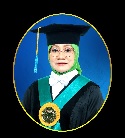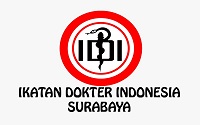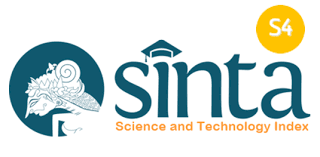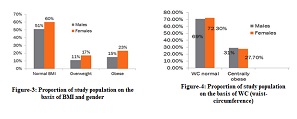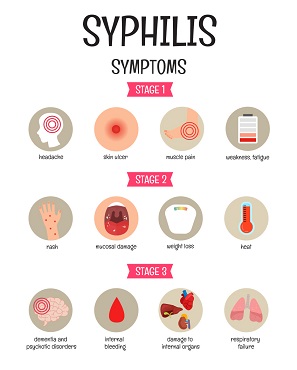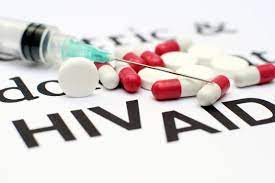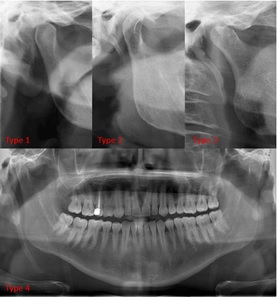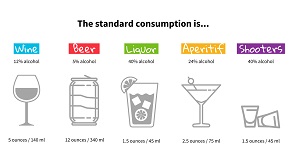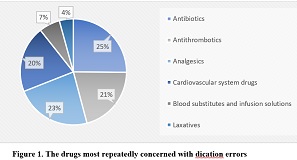The Relationship Between Fast Food Consumption and Obesity Among Adults at Pekan Labuhan Health Center, Medan, Indonesia

Obesity is defined as an excessive accumulation of body fat resulting from a prolonged imbalance between energy intake and energy expenditure, which may lead to various physical and psychosocial health complications. In Indonesia, the prevalence of adult obesity has reached approximately 22%, affecting around 625,000 individuals. One primary contributing factor to weight gain is the frequent consumption of high-calorie foods, such as sugary beverages, fast food, and items with a high glycemic index. This study investigated the association between fast food consumption and obesity among adults. An analytical cross-sectional study involved adult participants at the Pekan Labuhan Community Health Center in Medan who met specific inclusion and exclusion criteria. Data were obtained through structured interviews to assess the frequency of fast food consumption, alongside anthropometric measurements, including body weight, height, and calculation of Body Mass Index (BMI). The results indicated that 63% of the adult population in this community health center were classified as obese, and 72% reported frequent fast food consumption. Statistical analysis using the Pearson correlation test demonstrated a significant relationship between fast food consumption and obesity (p=0.001). The findings suggest that a higher frequency of fast food intake is significantly associated with increased obesity risk. These results underscore the importance of dietary education and public health strategies aimed at reducing fast food consumption to combat the rising prevalence of obesity.
INTRODUCTION
Obesity is when excessive fat accumulates due to an imbalance between energy intake and expenditure over time11. The increasing prevalence of obesity has made it a significant public health problem22. In the last 30 years, the figure for obesity increased to 47.1% in adolescents and 27.5% in adults. The incidence of obesity has increased, with more than 400 million people worldwide experiencing obesity. According to WHO, obesity in people from the Asia-Pacific region is characterized using Body Mass Index (BMI) measurements, with results of ≥25 kg/m233.
In low and middle-income countries, overweight and obesity rates are increasing, especially in urban areas. A study conducted in China revealed that the prevalence of obesity in 12,543 participants monitored for 22 years increased from 2.15 to 13.99% in both sexes, adjusted for age, namely in women from 2,78 to 13.22%. And man from 1.46 to 14.99%44. Based on data from an Adult Health study in Indonesia in 2018, it was found that 22% or around 625,000 adults in Indonesia were obese55. Obesity is a problem that causes several chronic diseases, such as type 2 diabetes mellitus, hypertension, stroke, coronary heart disease, cancer, and others. Apart from that, the increase in death rates is also due to the many diseases caused by obesity66.
Most people consider fast food the right solution to meet their daily food needs. Apart from its practicality, the promotion of modern food management has caused fast food to be valued as nutritious. Fast food is high in calories, fat, salt, sugar, and additives that can cause weight gain, such as fizzy drinks, fast food, and foods with a high glycemic index, often found in urban areas77.
MATERIALS AND METHODS
This study is an analytical study with a cross-sectional design to look at the relationship between fast food consumption and the incidence of obesity in adult society at Pekan Labuhan Health Center, Medan City. The study uses a questionnaire that has been used by several researchers in Indonesia and has been tested for validation and reliability. This research was conducted at the Pekan Labuhan Health Center, Medan, Indonesia. This research was carried out from January to February 2024.
The population in this study was adults living in the Pekan Labuhan Community Health Center, Medan, Indonesia. The inclusion criteria for this research sample are adults aged 26-45 years who do not have a history of diabetes mellitus, hypercholesterolemia, and hypertension and do not take drugs that cause obesity, such as paroxetine, valproic acid, amitriptyline, insulin, and prednisone, which are assessed based on the history taking.
BMI assessment criteria are based on the Asia-Pacific assessment with a range of underweight (<18,5kg/m2), standard (18.5–22.9 kg/m2), overweight (≥23 kg/m2), obesity grade 1 (18.5 – 22.9 kg/m2), and obesity grade 2(≥30kg/m2). The infrequency of fast food consumption is <45, while the frequency is ≥ 45.
This research has received ethical approval from the Health Research Ethics Committee of Universitas Sumatera Utara on February 16, 2024, number 133/KEPK/USU/2024.
RESULTS
Based onTable 1, 41% of respondents were in early adulthood, and 59% were in late adulthood. More Female respondents (57%) than male respondents (43%). The nutritional status of the respondent’s average body weight is 65.43 kg, and the average body height is 157.81 cm. There were 37 respondents in obesity grade 1 and 26 in obesity grade 2. As for the criteria for the frequency of consuming fast food, 28 respondents were infrequent (28%), and 72 respondents were frequent (72%).
Table 2 shows that respondents who frequently consume fast food are more obese than respondents who rarely consume fast food, namely 57% and 6%. The Spearman correlation test results obtained a p-value of 0.001 (p < 0.05), which shows a relationship between fast food consumption and obesity in adult society. The Spearman correlation test results obtained an r-value of 0.489, which shows that the relationship between fast food consumption and obesity is moderately correlated.
Variable | (n=88) | p-value |
Age, n (%) | ||
Early adult | 41 (41%) | |
Late adult | 59 (59%) | |
Sex, n (%) | ||
Man | 43 (43%) | |
Woman | 57 (57%) | |
Weight, kg | 65.43 (38-105) | 0,133¹ |
Height, cm | 157.81 (± 8.544) | 0,200¹ |
Nutritional status, n (%) | ||
Underweight | 8 (8%) | |
Normoweight | 17 (17%) | |
Overweight | 12 (19.3%) | |
Obesity grade1 | 37 (21.6%) | |
Obesity grade2 | 26 (14.8%) | |
Fast food consumption, n(%) | ||
Infrequently | 28 (28%) | |
Frequently | 72 (72%) | |
| Nutritional Status | Consumption frequency | Total | p-Value | r-Value | ||||
|---|---|---|---|---|---|---|---|---|
| Infrequently | Frequently | |||||||
| n | % | n | % | n | % | |||
Underweight | 4 | 4 | 4 | 4 | 8 | 8 | 0.001¹ | 0.489¹ |
Normoweight | 11 | 11 | 6 | 6 | 17 | 17 | ||
Overweight | 7 | 7 | 5 | 5 | 12 | 12 | ||
Obesity grade1 | 5 | 5 | 32 | 32 | 37 | 37 | ||
Obesity grade 2 | 1 | 1 | 25 | 25 | 26 | 26 | ||
Total | 28 | 28 | 72 | 72 | 100 | 100 | ||
DISCUSSION
The results of this study show that the prevalence of overweight, obesity 1, and obesity 2 in late adulthood is 58.3%, 70.3%, and 69.2%. This is in line with research conducted by Septiyanti and Seniwati in 2020, which showed that the incidence of obesity increases with age, with the highest prevalence occurring at the age of 40-59 years. Based on the age range, the highest prevalence of obesity is in late adulthood, namely 44 %.
Republic of Indonesia. Ministry of Health, FactSheet Obesitas Kit Informasi Obesitas. Jakarta: 2021. [Online]. Available: https://p2ptm.kemkes.go.id/dokumen-ptm/factsheet-obesitas-kit-informasi-obesitas. [Acecessed: March 21, 2023]
P. J. Dolton, and W. Tafesse, “Childhood Obesity, is Fast Food Exposure a Factor?,” Journal Economics and Human Biology, vol. 46, no. 2, pp.101-120. 2022. DOI: 10.1016/j.ehb.2022.101153
M. Alhashemi, W. Mayo, M. Alshaghel, M. Z. B. Alsaman, and L. Haj Kassem, “Prevalence of Obesity and Its Association with Fast-food Consumption and Physical Activity: A Cross-sectional Study and Review of Medical Students’ Obesity Rate,” Annals of Medicine and Surgery, vol. 79, no. 6, pp.62-73. 2022. DOI: 10.1016/j.amsu.2022.104007
X. Lin and H. Li, “Obesity: Epidemiology, Pathophysiology, and Therapeutics,” Frontiers in Endocrinology, vol. 12, no. 1, pp. 1–9. 2021. DOI: 10.3389/fendo.2021.706978
A. Hairil. “Pemberian Edukasi Mengenai Obesitas pada Remaja di Madrasah Aliyah Negeri 1 Indramayu. STIKES Graha Medika Program Studi Kesehatan Masyarakat” [Educational Intervention on Adolescent Obesity at Madrasah Aliyah Negeri 1 Indramayu], Community Engagement & Emergence Journal, vol. 2, no. 1, pp. 1-10. 2021. DOI : 10.37385/ceej.v2i1.123
M. Masrul. “Epidemi Obesitas dan Dampaknya terhadap Status Kesehatan Masyarakat serta Sosial Ekonomi Bangsa” [The Epidemiology of Obesity and Its Impact on Public Health Status and the Nation’s Socioeconomic Conditions], Majalah Kedokteran Andalas, vol. 41, no. 3, pp.152-162. 2018. DOI : 10.25077/mka.v41.i3.p152-162.2018
N. Hidajahturrokhmah, D. R. Kemuning, E. P. Rahayu, P. A. Araujo, R. A. Taqwim, and S. Rahmawati, “Sosialisasi HIV Atau Aids Dalam Kehamilan Di Rt 27 Rw 10 Lingkungan Tirtoudan Kelurahan Tosaren Kecamatan Pesantren Kota Kediri” [HIV/AIDS Awareness Campaign During Pregnancy in RT27 RW10, Tirtoudan Neighborhood, Tosaren Subdistrict, Pesantren District, Kediri City], Journal of Community Engagement in Health, vol. 1, no.1, pp.14–18. 2018 https://jceh.org/index.php/JCEH/article/view/5
Septiyanti S, Seniwati S. Obesity and Central Obesity in Indonesian Urban Communities. JIKA [Internet]. 2020 Dec. 31. 2(3):118-27. Available from: DOI : 10.36590/jika.v2i3.74
M.Y. Lubis, “Hubungan antara Faktor Keturunan, Jenis Kelamin dan Tingkat Ekonomi Orang Tua dengan Kejadian Obesitas pada Mahasiswa Universitas Malahayati Tahun 2020” [The Relationship Between Genetic Factors, Gender, and Parental Socioeconomic Status and the Incidence of Obesity Among Students at Malahayati University in 2020], Human Care Journal, vol. 5, no. 4, pp. 891-900. 2020. https://ojs.fdk.ac.id/index.php/humancare/article/view/744
Pebriani L, Frethernety A, Trinovita E. Studi Literatur: Pengaruh Konsumsi Junk Food terhadap Obesitas: Literature Review: Effect of Junk Food Consumption on Obesity. J Surya Medika [Internet]. 2022Aug.31; 8(2):270-8. DOI : 10.33084/jsm.v8i2.3103
F. Ramadani, “The Relationship between Fast Food Consumption and the Incidence of Obesity in Students of SMA Negeri 3 Subang and Its Review According to Islamic Views,” Junior Medical Journal, vol. 1, number. 7: 923–931. 2023 DOI : 10.33476/jmj.v1i7.3264
D. S. Kirana, “Literature Review: Correlation of Fast Food Intake to Overweight in Adolescents,” Media Gizi Kesmas, vol. 12, no. 1, pp: 434–440. 2023. DOI : 10.20473/mgk.v12i1.2023.434-440
N. Salsabilla, and U. Wahyuningsih. “Frekuensi Pembelian Makanan Online, Konsumsi Fast Food, dan Sedentary Lifestyle dengan Status Gizi Mahasiswa Gizi UPNVJ” Journal Gizi Dietetik, vol. 2, no. 1, pp. 24-30. 2023. DOI : 10.25182/jigd.2023.2.1.24-30
A. Mahyuni, D. Anggraini and E. Iriqani, “Hubungan Aktivitas Fisik, Pola Makan, Konsumsi Fast Food dan Genetik dengan Kejadian Obesitas pada Remaja di SMKN 2 Banjarbaru Tahun 2016” [Correlation of Physical Activity, Dietary Habit, Fast Food and Genetic with Obesity in Adolescents at SMKN 2 Banjarbaru in 2016], Jurnal Kesehatan Indonesia, vol. 7, no. 2, pp. 1-10. 2017. http://journal.stikeshb.ac.id/index.php/jurkessia/article/view/103
A. Hendarto, “The Burden of Childhood Obesity in Indonesia”. International Journal of Clinical Pediatrics and Child Health, vol.1, no. 1, pp. 21–27. 2019. https://journal.iipch.org/ijcpch/article/view/8
Cahyaningrum, “Leptin sebagai indikator obesitas, Sandubaya Mataram” [Leptin as an Indicator of Obesity], Jurnal Kesehatan Prima, vol. 1, no. 1, pp. 1364–1371. 2015. https://jkp.poltekkes-mataram.ac.id/index.php/home/article/view/58
S. Ciężki, E. Odyjewska, A. Bossowski & B. Głowińska-Olszewska, “Not Only Metabolic Complications of Childhood Obesity. Nutrients,” vol. 16, no.4, pp. 1–31. 2024. DOI: 10.3390/nu16040539
F. N. Jamaludin, R. A. Dina, E. Fajriah, & A. Zahra. “Pola Konsumsi Makanan Sumber Gula , Garam , Lemak dan Hubungannya dengan Penyakit Obesitas di Desa Babakan” [Dietary Patterns of Sugar, Salt, and Fat Intake and Their Association with Obesity in Babakan Village], Jurnal Poltera, vol.4, no.2, pp. 25–31. 2023. DOI : https://jurnal.poltera.ac.id/index.php/jstk/article/view/292
M. S. Kartolo, A. H. Santoso, “Hubungan Frekuensi Konsumsi, Asupan Energi, Lemak, Gula, Dan Garam Dalam Fast Food Dengan Kejadian Obesitas Pada Siswa/I SMP X Yogyakarta” [The Relationship Between Frequency of Consumption, Energy, Fat, Sugar, and Salt Intake from Fast Food and the Incidence of Obesity Among Students at Junior High School X in Yogyakarta], Ebers Papyrus, vol. 28, no.1, pp. 38–50. 2022 https://journal.untar.ac.id/index.php/ebers_papyrus/article/view/19419/10592
S. G. B. Aulia, T. Makmur, and A. H. Hamid, “Perilaku Konsumsi Fast Food Mahasiswa Fakultas Pertanian Universitas Syiah Kuala Kota Banda Aceh” [Fast Food Consumption Behavior Among Students of the Faculty of Agriculture, Unsyiah University, Banda Aceh], Jurnal Ilmiah Mahasiswa Pertanian Unsyiah, vol. 3, no. 1, pp. 130–139. 2018. https://jim.usk.ac.id/JFP/article/view/6472
Copyright (c) 2025 Fauzan Azmi Hasti Habibi Samosir, Kamila Harisah Qalbi, Vincent Wijaya, Kathy Kathy, Yesindi Nakita Miadi; Monica Dwi Putri; Juliandi Harahap

This work is licensed under a Creative Commons Attribution-ShareAlike 4.0 International License.
- The journal allows the author to hold the copyright of the article without restrictions.
- The journal allows the author(s) to retain publishing rights without restrictions.
- The legal formal aspect of journal publication accessibility refers to Creative Commons Attribution Share-Alike (CC BY-SA).
- The Creative Commons Attribution Share-Alike (CC BY-SA) license allows re-distribution and re-use of a licensed work on the conditions that the creator is appropriately credited and that any derivative work is made available under "the same, similar or a compatible license”. Other than the conditions mentioned above, the editorial board is not responsible for copyright violation.


